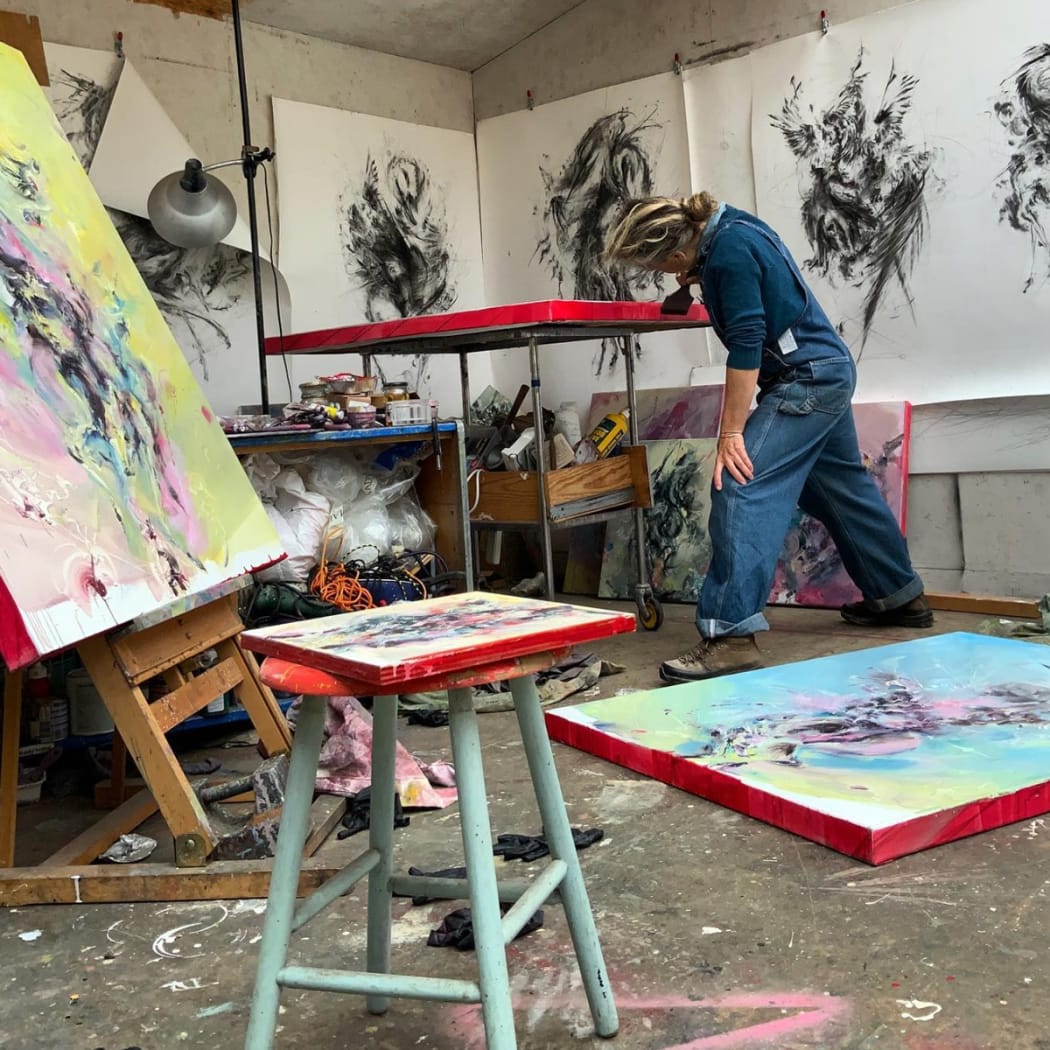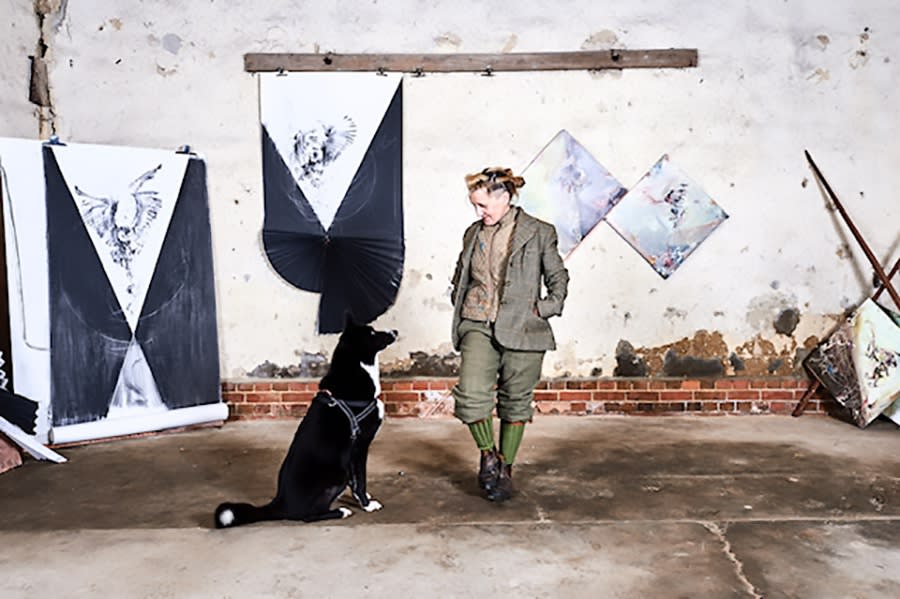
Nessie Stonebridge paints birds of the wetlands and hinterlands: magisterial swans, herons and raptors. Her paintings take on something of their subject's urgency, it is almost as if they can’t contain this energy. When exhibited, the paintings become bird-like in their positioning, squatting on a floor or perched on a ledge, prone to flight. Displayed in choreographed arrangements, they teeter on their edges, pinioned and poised or strung up like bondage performers with scarlet cord. Exhibited together, they behave like a flock, frozen in space. Nessie’s installations place pairs of paintings or groups that seem to react intuitively to their neighbours and the architectural environment that they inhabit. On display, these works are complete: they behave as if they are avian exhibitionists.

Resembling some sort of mid-air collision, often small in scale, they nevertheless reach out beyond their boundaries - their vectors suggestively spreading beyond their pictorial edges into the gallery space. Previously based in London, Nessie's latest work draws inspiration from the bucolic, wild and wind-battered Norfolk coastline, close to where her studio is located.
Her palette has softened to include more murky and romantic sea greens and stony blues. These more natural hues are offset by vivid moments of post-punk pink and night-crawler black.

The resulting paintings describe a sense of attack and defence between the birds she observes, intimating the basic fight-or-flight behaviour of even the most diminutive of birds. Beyond their avian references, these images are impressive for their counterpoising of formal elements. The gestural brilliance of Nessie's mark-making - her paint is scored and splattered with a palette knife, brush or by hand - is contained within a deliberate and considered rigour. Punctuated among these viseral moments are pinpoint intervals of calm.
For all their allusions to natural and animal forces, Nessie's paintings are fundamentally abstract. The figurative elements, the profile of a head or a wing movement are presented as stocastic incidents within the prevailing painted surface. Over time she has become increasingly concerned with the edges of her paintings and drawings, often extending them out with sculptural elements, such as painted and concertinaed canvas, or long thin strips of wood resembling thin shelves or props. As gallery-based dramaturgy, occasionally these arrangements invoke the use of Japanese war fans, as both weapons and shields in the Samurai arsenal, and of the use of fans in codified symbolic rituals in eighteenth-century France to indicate sexual availability during ritual courtship. Nessie talks similarly of the enormous range of lurid colours in nature - the gold and vermillion of fauna and flora: signals of attraction and danger and all the life-and-death struggles that are part of everday experience for these fierce creatures.
Nessie Stonebridge has exhibited extensively nationally and internationally: At CARSLAW St. Lukes, London; Torrance Art Museum, California; UNTITLED, Miami, Basel and New York. Recently Nessie has exhibited her work in the east of England at Groundwork Gallery, Kings Lynn (Bird after Bird); Norwich Castle Museum (Inheritance) and (Somewhere Unexpected); and The Cut Halesworth (An Appetite for Risk).

